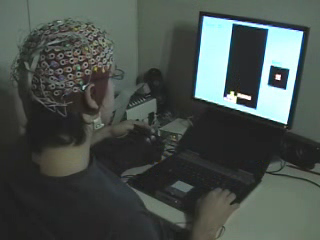Table of Contents
User emotional assessment
Assessment of users emotional states by using multimodal physiological signals.
Project description
We are interested in the recognition of affective states which are not produced intentionally by the user. As opposed to more traditional ways of assessing emotions (video analysis of facial expressions and body postures, speech analysis), EEG and other physiological recordings cannot be easily faked or suppressed, and can provide direct information as to the user state of mind. Since emotion is involved in any kind of communication, this can be applied to the BMI domain as well as in HCI in general. In order to assess the arousal and valence components of emotion, we have developed a complete acquisition protocol to build a physiological emotional database for real participants. Arousal assessment is then formulated as a classification problem, with classes corresponding to various degrees of arousal. The performance of 2 classifiers has been evaluated, on peripheral signals, on EEG's, and on both by fusion of modalities. Results confirm the possibility of using EEG's to assess the arousal component of emotion, and the interest of fusing EEG's with peripheral physiological signals. Our ongoing work concerns the improvement on the results for arousal evaluation as well as the assessment of the valence component of emotion. The overall aim is to be able to identify a point or a region in the valence / arousal space, since to such a point will correspond a labeled emotion, such as fear, anger, or joy.
Current research topics
- Arousal and valence evaluation by classification;
- Analysis of dynamic characteritics of emotions.
Video example of a game protocol

